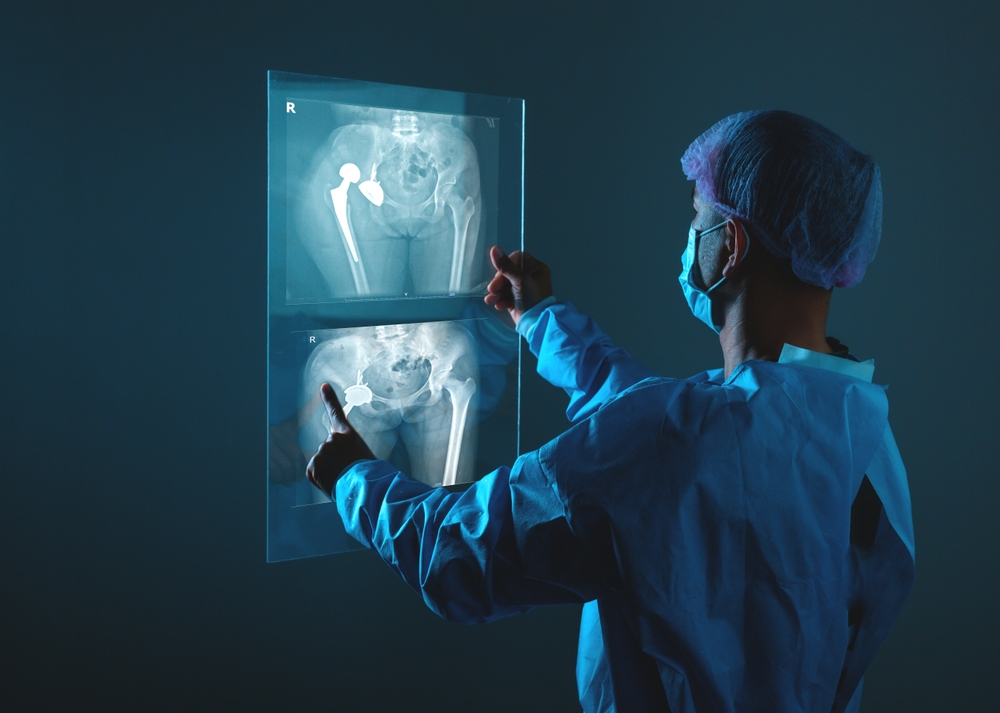
This procedure is commonly performed to alleviate pain and improve mobility in patients suffering from conditions like osteoarthritis, rheumatoid arthritis, or trauma. Hip replacement surgery is an effective treatment that enhances patients' quality of life and reduces pain.
Hip replacement surgery, or hip arthroplasty, involves the surgical removal of a damaged or worn hip joint and its replacement with an artificial prosthesis. This prosthesis is typically made of metal, ceramic, or plastic components and is designed to mimic the function of a natural hip joint. The primary purpose of hip replacement surgery is to relieve pain, improve joint function, and enhance the overall quality of life for patients suffering from hip joint issues.
This procedure aims to eliminate the pain and mobility limitations caused by conditions affecting the hip joint. Hip replacement surgery is often indicated for conditions such as osteoarthritis, rheumatoid arthritis, avascular necrosis, and hip fractures. The surgery enables patients to perform daily activities more comfortably and with less pain.
Hip replacement surgery can be beneficial for various hip joint problems, including:
Hip replacement surgery is typically performed under general anesthesia or spinal anesthesia. During the procedure, the surgeon removes the damaged hip joint and replaces it with an artificial prosthesis. Prostheses can be either cemented or uncemented. The prosthesis components are designed to replicate the function of a natural hip joint. The surgeon positions and secures the prosthesis correctly.
The procedure usually takes 2-3 hours, and patients typically stay in the hospital for a few days. The recovery process after hip replacement surgery requires careful care and physical therapy. Patients may experience pain, swelling, and bruising in the first few days post-surgery. These symptoms generally resolve within a few weeks. Following the surgeon’s care instructions and adhering to a physical therapy program is crucial for a successful recovery.
One of the main advantages of hip replacement surgery is the relief of pain and improvement of mobility in the hip joint. This procedure replaces the damaged or worn hip joint with an artificial prosthesis, enhancing joint function and enabling patients to perform daily activities with ease. Hip replacement surgery significantly improves patients’ quality of life by reducing pain and increasing mobility.
However, hip replacement surgery also carries some risks and potential complications. Post-operative complications can include infection, bleeding, loosening or dislocation of the prosthesis. Additionally, there is a risk of the prosthesis wearing out or loosening over time. Patients should be thoroughly informed about the benefits and risks of hip replacement surgery and discuss all potential outcomes with their surgeon. When performed by an experienced and skilled surgeon, hip replacement surgery is generally a safe and effective procedure.
The recovery process after hip replacement surgery requires careful attention to care and adherence to the doctor’s instructions. Patients may experience pain, swelling, and bruising in the hip area in the first few days post-surgery. These symptoms usually resolve within a few weeks. Patients can manage pain with prescribed pain medications and reduce swelling with cold compresses.
It is essential to avoid strenuous physical activities during the recovery period. Patients should rest and gradually return to normal activities over the first few weeks post-surgery. Physical therapy plays a crucial role in helping the hip joint heal and improving mobility. Patients should regularly attend physical therapy sessions and carefully follow the prescribed exercises. Regular follow-up appointments with the surgeon are critical for monitoring the recovery process and early detection of potential complications. For more information about hip replacement surgery, contact EMPCLINICS.
Yes, pre-surgery physical therapy can help strengthen the muscles and support post-surgery recovery. It also helps prepare patients for the post-operative rehabilitation process.
Excessive weight can shorten the lifespan of the prosthesis and increase the risk of complications. Maintaining a healthy diet and regular exercise can help support the longevity of the surgery results.
A hip prosthesis may need to be replaced if it wears out or loosens, typically occurring after 15-20 years, though it can vary depending on the patient.